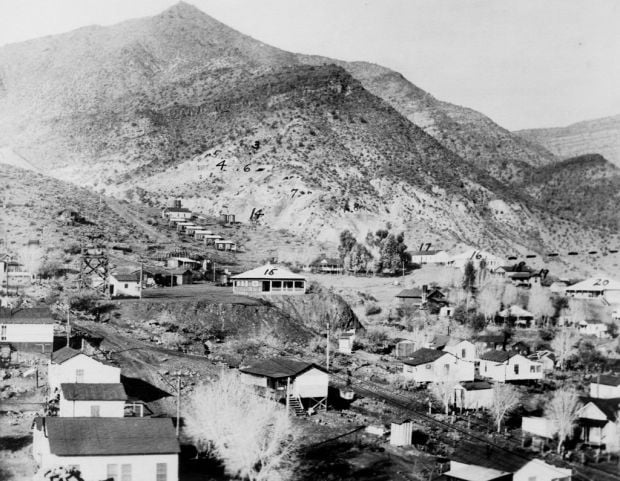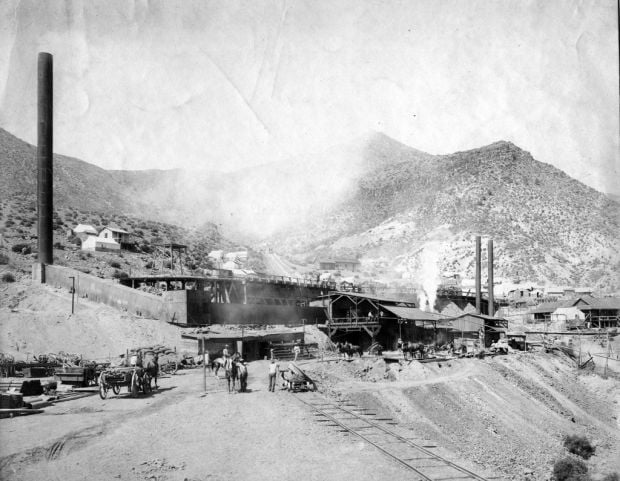Note to readers: This is a reprint, for Christmas Day, of a column the Star published on Dec. 23, 2013:
The Christmas Mine was the principal mine in the Banner Mining district, which covers a geographic area 15 miles long and seven miles wide.
On the eastern flank of the Dripping Spring Mountains, 22 miles south of Globe, the Christmas Mine was known for its abundant copper deposits — it produced 55 million pounds of copper from 1905 to 1943 valued at more than $10 million. It also yielded limited amounts of gold and silver.
The Christmas copper deposit was discovered in 1880 by Dennis O’Brien and William Tweed, who either sold or optioned their claims to Phelps, Dodge & Co.
The claims could not be developed because they were deemed invalid since they were in the confines of the San Carlos Indian Reservation. Mining in the area was hindered until the reservation boundaries were redrawn and the valuable mining property was reclassified as public domain following an executive order issued by President Theodore Roosevelt on Dec. 22, 1902, opening the future Christmas Mine property to mineral exploration.
Upon hearing about the reclassification, George B. Chittenden and N.H Mellor staked their claims on Christmas morning 1902, giving the mine and future town their namesakes.
Phelps, Dodge & Co. filed suit to recover its disputed claims without success while the disputed mining claims were taken over by the newly formed Saddle Mountain Mining Co.
Several different companies operated or had a vested interest in the history of the property. They included the San Carlos Copper Co.; Phelps, Dodge & Co.; Saddle Mountain Mining Co.; Gila Copper Sulphide Co.; American Smelting and Refining Co.; the Christmas Copper Co.; and the Inspiration Consolidated Copper Co. Inc.
The revolving door of companies resulted from a lack of capital, bankruptcy, financial panic, bond defaults and the fluctuating price of copper.
In the early years the property hosted a 20-ton concentrator, Bartlett table and an old smelter with two small water-jacket blast furnaces.
Each day 40,000 gallons of water were acquired from the mine workings for domestic and mining purposes.
The nearby Deer Creek Coal Field provided fuel for the smelter. In later years a 9-mile branch line of the Southern Pacific Railroad was established nearby to accommodate ore transport to the Asarco smelter at Hayden.
The town’s peak years were from 1925 to 1932, with a population reaching 1,000. The community included a dairy, butcher shop, barbershop, general store and pool hall along with a Catholic church and school.
A post office operated from 1905 through 1935. During these prosperous times, it became a destination for people across the country to send holiday cards in November and December so they could be re-mailed with the Christmas postmark.
The Christmas Mine saw heightened activity during and after World War II when the U.S. Geological Survey and the U.S. Bureau of Mines undertook a diamond-drilling exploration program.
By the late 1950s, the Inspiration Consolidated Copper Co. operated the mine. At that time, open-pit operations became the method of choice for mining the Christmas porphyry copper deposit, replacing the previous underground mining practice.
Several mineral discoveries have been made at the Christmas Mine, including junitoite, apachite and ruizite.
Active mining was halted in the early 1980s due to the declining price of copper.
Watch now: Globe-Miami is known to have some of the best Mexican food in Arizona. Meet the family that owns six restaurants there, and 13 across the state. Video by Ellice Lueders / This Is Tucson





